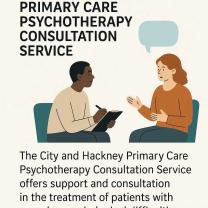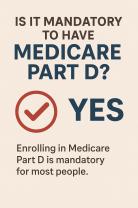What are the best exercises for cardiac patients?
Exercising safely and effectively is crucial for cardiac patients to improve cardiovascular health, strengthen the heart, and enhance overall well-being. However, it's essential to consult with a healthcare provider or cardiac rehabilitation specialist before starting any exercise program, as recommendations can vary based on an individual's specific condition and medical history.
That said, here are some generally safe and effective exercises for cardiac patients:
1. Walking:
- Walking is an excellent low-impact exercise that most cardiac patients can incorporate into their routine. Start with short, gentle walks and gradually increase the duration and intensity as tolerated. Use a pedometer or fitness tracker to monitor progress.
2. Stationary Cycling:
- Stationary cycling is another low-impact option that is easy on the joints and allows you to control the intensity. Begin with a comfortable resistance level and pedal at a pace that suits your fitness level.
3. Swimming and Water Aerobics:
- Water provides buoyancy, reducing stress on the joints while providing an effective cardiovascular workout. Swimming and water aerobics are suitable options for many cardiac patients.
4. Chair Exercises:
- Chair exercises are ideal for individuals with limited mobility or balance issues. Seated leg lifts, seated marches, and seated arm exercises can help improve circulation and muscle strength.
5. Yoga:
- Gentle yoga classes or modified yoga poses can enhance flexibility, balance, and relaxation. Look for classes specifically designed for cardiac patients or beginners.
6. Tai Chi:
- Tai Chi is a low-impact martial art that focuses on slow, flowing movements and deep breathing. It can improve balance, reduce stress, and enhance cardiovascular health.
7. Strength Training:
- Strength training exercises, using light weights or resistance bands, can help strengthen muscles, including the heart muscle. However, it's crucial to work with a fitness professional who is experienced in cardiac rehabilitation to develop an appropriate strength training program.
8. Stretching:
- Stretching exercises can improve flexibility and prevent muscle stiffness. Incorporate gentle stretching into your routine to enhance overall mobility.
9. Breathing Exercises:
- Deep breathing exercises can help reduce stress and improve lung function. Practicing controlled, deep breathing can be a valuable addition to your cardiac exercise program.
10. Interval Training (Under Supervision):- For individuals with well-controlled heart conditions, supervised interval training may be appropriate. This involves alternating between periods of higher-intensity exercise and recovery periods. It should only be done with the guidance of a healthcare provider or cardiac rehabilitation specialist.
Tips for Safe Exercise:
- Always warm up and cool down before and after exercise.
- Monitor your heart rate, and stay within the recommended target heart rate zone as advised by your healthcare provider.
- Pay attention to how your body feels during exercise. If you experience unusual symptoms like chest pain, dizziness, or severe shortness of breath, stop exercising immediately and seek medical attention.
- Stay hydrated throughout your workout.
- Take medications as prescribed by your healthcare provider.
- Follow any specific exercise guidelines provided by your cardiac rehabilitation team.
Remember that individual exercise prescriptions should be tailored to your specific condition, so consult with your healthcare provider to create a safe and effective exercise plan that suits your needs and goals. Regular monitoring and follow-ups with healthcare professionals are essential for cardiac patients engaged in exercise programs.
Exercising Safely with Heart Conditions: Best Practices for Cardiac Patients
Exercise is important for everyone, but it is especially important for people with heart conditions. Exercise can help to improve heart health, reduce the risk of heart disease, and manage heart disease symptoms.
However, it is important to exercise safely when you have a heart condition. Here are some best practices for cardiac patients:
- Talk to your doctor before starting any new exercise program. Your doctor can help you to create an exercise plan that is safe and effective for you.
- Start slowly and gradually increase the intensity and duration of your workouts over time.
- Listen to your body and stop exercising if you feel any pain or discomfort.
- Stay hydrated by drinking plenty of fluids before, during, and after exercise.
- Avoid exercising in extreme heat or cold.
Cardiac-Friendly Workouts: Top Exercises for Heart Patients
There are many different types of exercises that are safe and beneficial for cardiac patients. Here are some top exercises for heart patients:
- Aerobic exercise: Aerobic exercise is any type of exercise that gets your heart rate up and your blood pumping. Good examples of aerobic exercise for cardiac patients include walking, swimming, biking, and dancing.
- Strength training: Strength training exercises help to build and strengthen your muscles. Good examples of strength training exercises for cardiac patients include lifting weights, using resistance bands, and doing bodyweight exercises such as push-ups and sit-ups.
- Flexibility exercises: Flexibility exercises help to improve your range of motion and reduce muscle stiffness. Good examples of flexibility exercises for cardiac patients include yoga, Pilates, and stretching.
Keeping Your Heart Healthy: Effective Exercises for Cardiac Care
The best exercises for keeping your heart healthy are the ones that you enjoy and can stick with. It is important to find a variety of exercises that you can do on a regular basis.
Here are some effective exercises for cardiac care:
- Walking: Walking is a great way to get started with exercise. It is easy on your joints and can be done anywhere. Aim for at least 30 minutes of brisk walking most days of the week.
- Swimming: Swimming is another great low-impact exercise for cardiac patients. It is also a good way to cool off on a hot day.
- Biking: Biking is a fun and challenging way to get exercise. It is also a good way to get around town. If you are new to biking, start slowly and gradually increase the distance and speed of your rides.
- Dancing: Dancing is a great way to get exercise and have fun at the same time. There are many different types of dance, so you can find one that you enjoy.
- Strength training: Strength training is important for everyone, but it is especially important for cardiac patients. Strong muscles can help to improve your heart health and reduce your risk of heart disease. Aim to do strength training exercises two to three times per week.
- Flexibility exercises: Flexibility exercises can help to improve your range of motion and reduce muscle stiffness. This can make it easier to do other types of exercise. Aim to do flexibility exercises two to three times per week.
If you have any questions or concerns about exercising with a heart condition, talk to your doctor. They can help you to create an exercise plan that is safe and effective for you.













